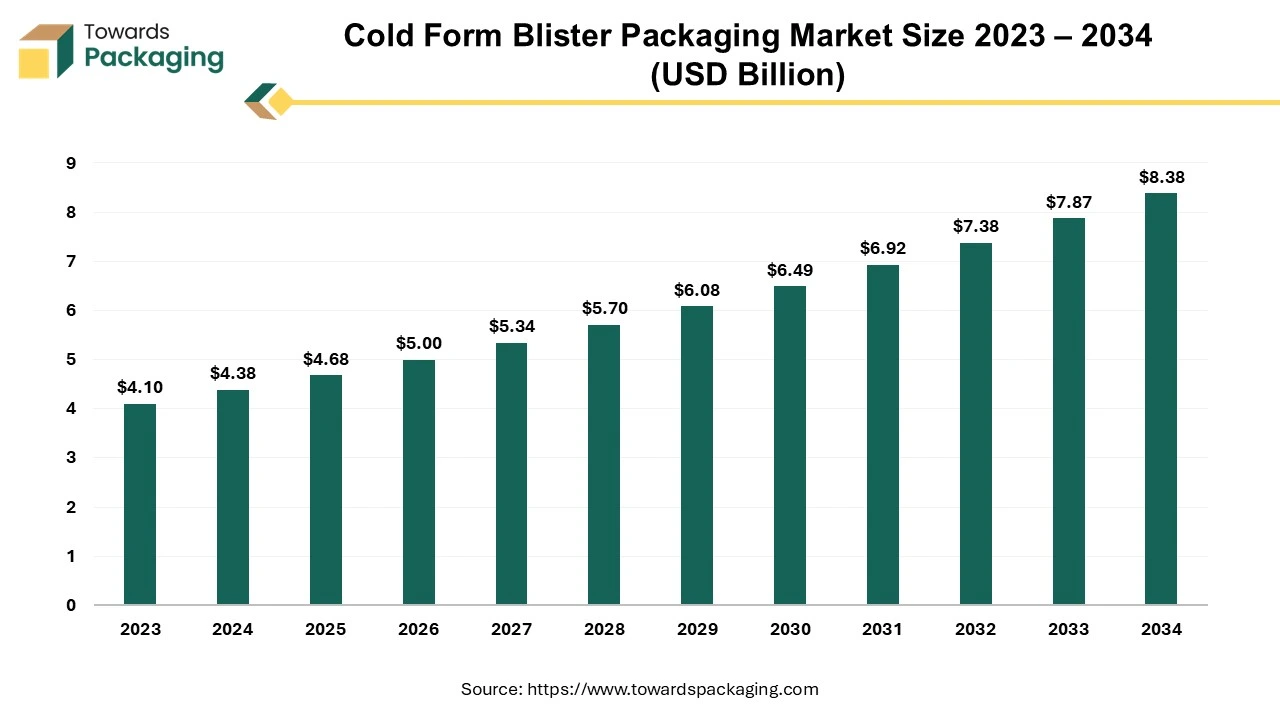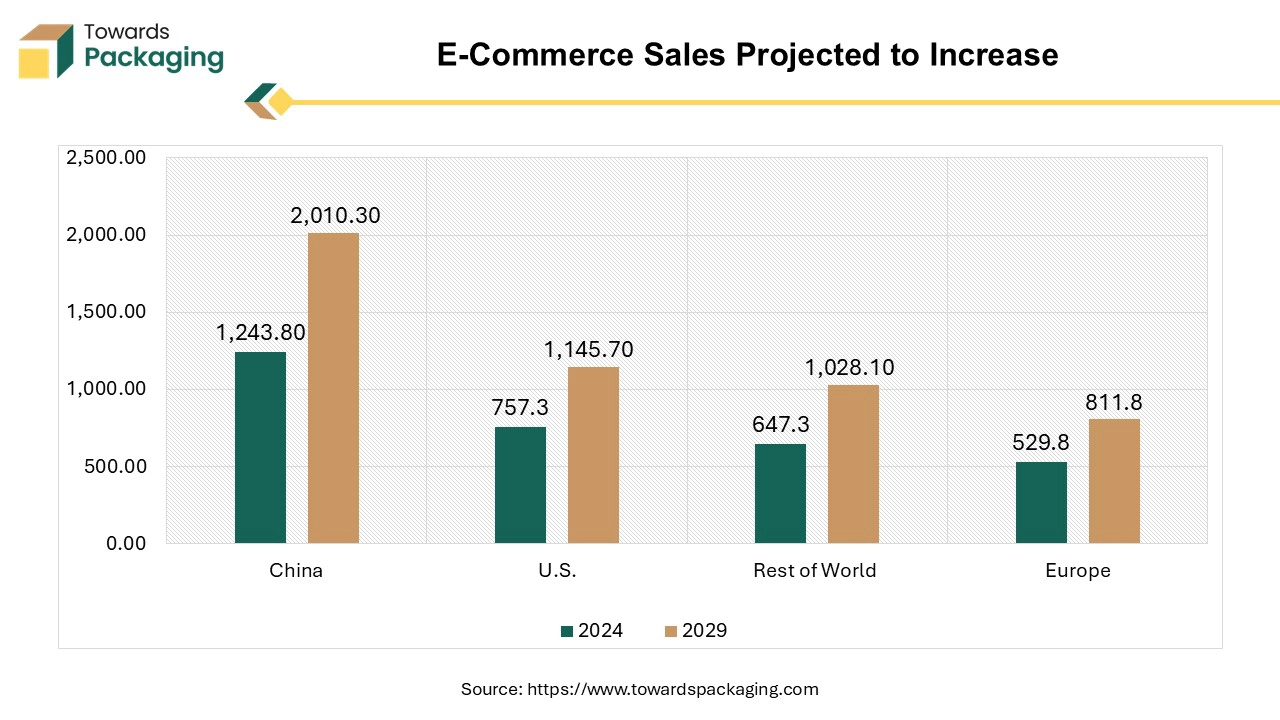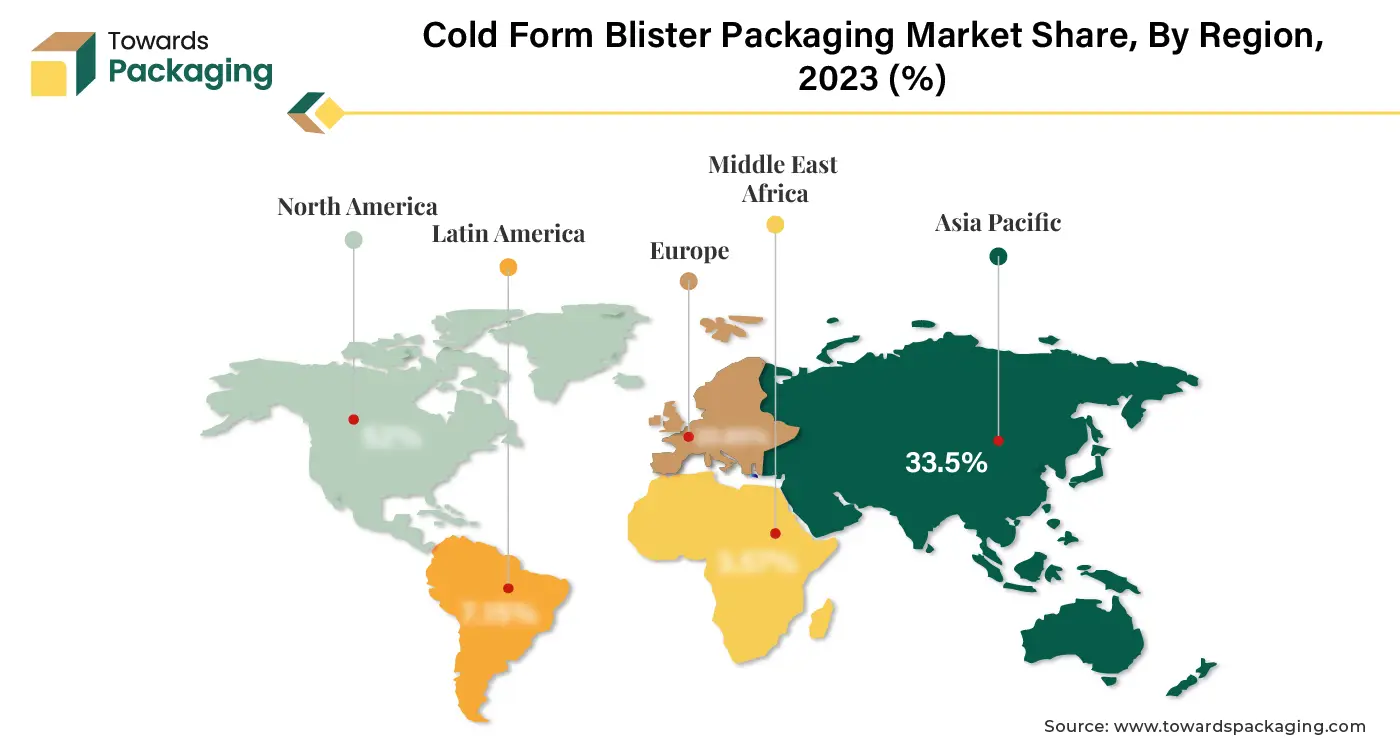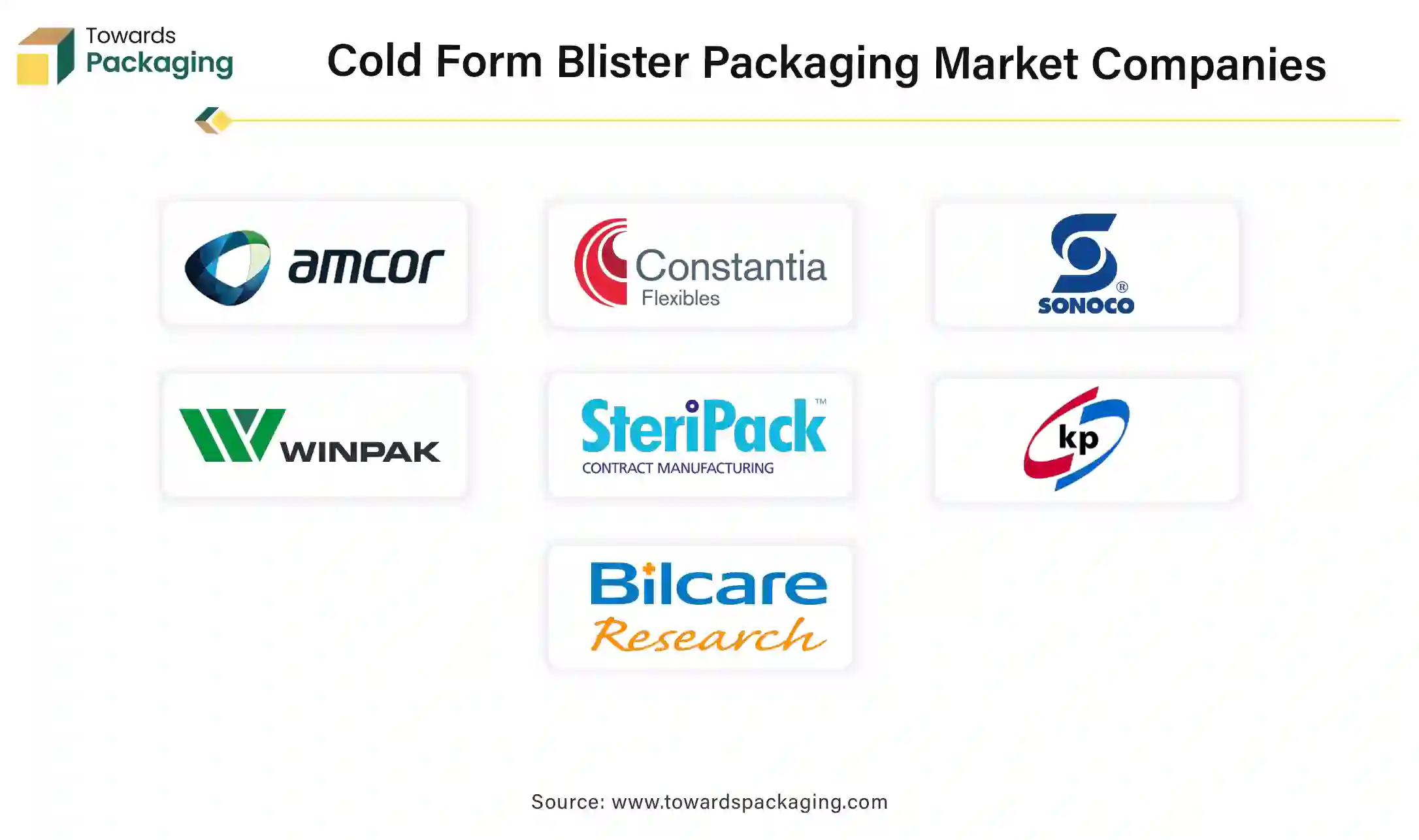April 2025
The cold form blister packaging market size is projected to reach USD 8.38 billion by 2034, growing from USD 4.68 billion in 2025, at a CAGR of 6.75% during the forecast period from 2025 to 2034.

Unlock Infinite Advantages: Subscribe to Annual Membership
The key players operating in the market are focused on adopting inorganic growth strategies like acquisition and merger to develop advance technology for manufacturing cold form blister packaging which is estimated to drive the global cold form blister packaging market over the forecast period.
Cold form blister packaging is a type of pharmaceutical and medical packaging used to protect products like tablets, capsules, or sensitive medical devices. It is made by pressing aluminum-based laminate sheets into the desired shape without the use of heat, hence the term "cold form." The components of cold form blister packaging have been mentioned here as follows: aluminum foil, polymer film (e.g., PVC or PVDC), and nylon film. The aluminium foil offers and impermeable barrier to moisture, light, oxygen and other environmental factors. The polymer film adds structural support and acts as a sealing layer. The nylon films provide extra durability and strength, making it resistant to punctures.
The cold form blister packaging provides excellent barrier properties which completely protects the contents from oxygen, UV, moisture, light, and contaminants, extending product shelf life. Unlike thermoforming, where heat is utilized to shape plastic, cold forming uses mechanical force, making it ideal for heat-sensitive products. Resistant to punctures and strong enough to withstand external pressures during transport and storage.
The cold form blister packaging industry is experiencing significant growth, driven by advancements in packaging technology, sustainability demands, and the increasing demand for secure and tamper-evident packaging in healthcare and pharmaceuticals.
Aluminum remains the dominant material due to its superior barrier properties against moisture and oxygen. Innovations in recyclable and biodegradable materials are also gaining traction to meet sustainability goals.
Rising environmental awareness is pushing the industry towards sustainable solutions, such as recyclable and biodegradable materials, which appeal to eco-conscious consumers and comply with regulatory standards.
Incorporating technologies like RFID tags, QR codes, or sensors for product tracking and authentication can enhance market appeal.
AI integration can significantly enhance the growth of the cold form blister packaging industry by cutting-down costs, optimizing processes, improving quality, and driving innovation. AI-driven analytics can predict machinery breakdowns, minimizing downtime and ensuring continuous production. AI-powered systems can automate repetitive tasks, increasing efficiency and throughput. AI algorithms can optimize material usage, minimizing waste and costs.
AI-enabled computer vision systems can identify defects in real-time, such as uneven sealing or material inconsistencies, ensuring high-quality output. AI can analyze patterns in production and flag irregularities before they become significant issues. The integration of AI tools can create more efficient and eco-friendly packaging designs by simulating material stress and environmental impact. AI enables customized packaging designs tailored to specific product or customer demands, improving market differentiation.
Rise in demand for secure packaging for shipping goods, which is estimated to drive the growth of the cold form blister packaging market over the forecast. Cold form blister packaging provides durability and protection, ideal for products sold and shipped through e-commerce platforms. Expanding online retail necessitates secure and tamper-proof packaging to ensure product safety during transit.

The key players operating in the cold form blister packaging market are facing challenges due to stringent regulatory norms as well as limited design flexibility. The high material costs and competition from alternative materials restrict the growth of the cold form blister packaging market. Thermoforming is a less expensive and more flexible alternative, making it a preferred choice for some manufacturers. Pouches and sachets provide lightweight and cost-effective solutions, posing competition to cold form blister packs. Cold form blister packaging processes are slower compared to thermoforming, which can limit scalability and increase production time. Cold form packaging is less flexible and provides limited customization compared to thermoformed plastic packaging. This can restrict its application in products requiring intricate shapes or branding.
Regulatory requirements for moisture-proof, tamper-evident, and safe packaging encourage the adoption of cold form blister packs. The need for secure, long-lasting packaging in the food industry presents growth potential. The increasing popularity of dietary supplements requires reliable, moisture-resistant packaging to preserve product efficacy.
Rising preference for convenient, unit-dose packaging in pharmaceuticals and nutraceuticals drives demand. Enhanced security against counterfeiting and tampering presents an opportunity to differentiate through innovation.
The aluminium segment held a dominant presence in the cold form blister packaging market in 2024. Aluminium is predominantly utilized in cold form blister packaging because of its unique properties that make it highly effective for protecting sensitive products. Aluminum offers a nearly impermeable barrier against moisture, protecting products that are sensitive to humidity.
The aluminium material blocks light and oxygen, preventing oxidation and degradation of sensitive items like pharmaceuticals and food products. Aluminum material provides strong mechanical protection, ensuring the integrity of products during transportation and storage. Aluminum is often laminated with plastic films and other materials to enhance its performance, combining the strengths of different layers (e.g., forming capability, sealing properties). Aluminum is ideal for deep drawing and forming without cracking, enabling the creation of secure cavities for various product shapes and sizes.
The Polyvinyl Chloride (PVC) segment is expected to grow at the fastest rate in the cold form blister packaging market during the forecast period of 2024 to 2034. PVC is a desirable substitute for cold-form blister packaging solutions when compared to other materials, particularly for less expensive products or when cost reduction is a key factor. The market expansion for this sector is further driven by the fact that these films have great visibility properties, which are crucial for items like oral medications where the visual appeal or identification of the contents is important.
The healthcare segment registered its dominance over the global cold form blister packaging market in 2024. The global increase in chronic illnesses and aging demographics drives higher consumption of medications that require moisture- and light-resistant packaging like cold form blister packs. The growth in biologics, specialty drugs, and highly sensitive formulations requires advanced packaging to maintain efficacy and stability.
The electronics & semiconductors segment is expected to grow at the fastest rate in the cold form blister packaging market during the forecast period of 2024 to 2034. Electronic components, such as capacitors, semiconductors, and resistors, are sensitive to moisture, which can cause corrosion or malfunction. Cold form blister packaging provides an effective moisture barrier. The packaging prevents oxidation and UV damage, extending the shelf life of delicate electronic parts.
Cold form blister packaging offers robust protection against punctures, ensuring electronic components remain intact during handling and transportation. It safeguards small, fragile components from mechanical shocks during storage and transit. Cold form packaging can be tailored to fit the exact dimensions of electronic components, minimizing movement and potential damage. Electronic components are often manufactured in one location and shipped globally.
Cold form blister packaging ensures product integrity during long-distance transport. The protective nature of cold form blister packaging reduces the risk of damage, minimizing financial losses and ensuring customer satisfaction. Its lightweight in nature and assists to minimize shipping costs, which is crucial for high-volume shipments of electronics. As sustainability becomes a priority, cold form blister packaging with recyclable materials aligns with eco-friendly practices in the electronics industry.
Asia Pacific region held the largest share of the cold form blister packaging market in 2024. As Asian pharma companies expand their product portfolios, particularly in high-value drugs like biologics and generics, the demand for protective, long-shelf-life packaging like cold form blister packs will grow. Focus on sensitive drugs: Many pharmaceutical companies are developing moisture- and temperature-sensitive drugs that require superior barrier properties, directly benefiting cold form blister packaging.
To meet export demands, pharma companies often follow international packaging standards, which can increase the use of cold form blister packs due to their compliance with strict regulations for drug safety and quality. As sustainability becomes a focus, Asian pharma companies can push packaging firms to develop recyclable or eco-friendly cold form blister materials, contributing to the industry's growth. Asian pharma companies expanding into developing markets will increase the need for durable and affordable packaging, including cold form blisters, for safe drug transportation and storage in diverse climates.

North America region is anticipated to grow at the fastest rate in the cold form blister packaging market during the forecast period. eCommerce requires robust packaging to withstand handling, long shipping durations, and varied climatic conditions. Cold form blister packaging, with its superior barrier properties, ensures the safety of pharmaceutical and healthcare products during transit. Many eCommerce platforms cater to pharmaceuticals and OTC drugs that are highly sensitive to environmental factors. Cold form blister packs offer excellent protection against moisture, oxygen, and light, making them ideal for such products.
North America’s stringent regulations for pharmaceuticals emphasize serialization and anti-counterfeiting measures. Cold form blister packs, with their adaptability for unique codes and tamper-evidence features, align well with these needs, supporting eCommerce distribution's transparency. The eCommerce boom in North America acts as a catalyst for the cold form blister packaging industry by increasing demand for durable, secure, and innovative packaging solutions. The intersection of consumer expectations, eCommerce logistics, and regulatory requirements ensures that cold form blister packaging remains a critical component in the value chain of pharmaceutical and healthcare products sold online.

According to Johannes Steurer, CEO of Aluflexpack, packaging company, stated that new regulations shaped the cold form blister packaging market and encouraged the company to try something no one had done before: form lacquered aluminum into a new, fully recyclable product for the pharmaceutical industry.
By Material
By Application
By Region
April 2025
April 2025
April 2025
April 2025